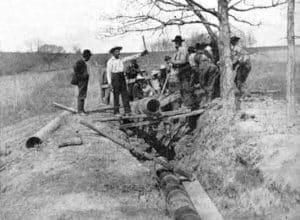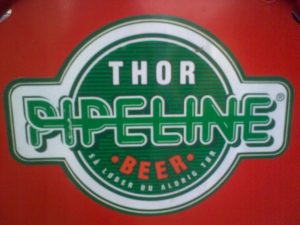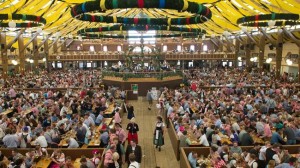A New Kind of Pipeline

Although aqueducts were used as far back as the 7th century BC, the first actual pipeline was built in 1595 to carry salt water. It was an impressive 25 miles long and made from 13,000 hollowed tree trunks. In the United States, pipelines have been in use since 1865 when the first truly successful oil pipeline was built in Pennsylvania. Engineered by Samuel Van Syckle, an inventive oil worker from New Jersey, it was constructed of wrought iron and extended five miles from the Pithole pumps to the Oil Creek railroad. Since then, we’ve built pipelines that are literally thousands of miles long that transport not only oil, but also water, natural gas, gasoline, and ethylene, and they even cross international borders.
Typically, pipelines can be classified in three categories, depending on purpose:
- Gathering pipelines are short, interconnected pipelines with small diameters forming complex networks with the purpose of bringing crude oil or natural gas from nearby wells to a treatment plant or processing facility.
- Transportation pipelines are mainly long pipes with large diameters, moving products such as oil, gas, and refined products between cities, countries, and even continents.
- Distribution pipelines (our specialty!) are composed of several interconnected pipelines with small diameters that are used to take products – like clean, treated water – to the final consumer.
 Very recently, however, there has emerged a fourth category of pipeline: beer pipelines.
Very recently, however, there has emerged a fourth category of pipeline: beer pipelines.
The Veltins-Arena in Gelsenkirchen, Germany is a massive soccer stadium that seats over 60,000 people. To cater to such a large crowd, it houses 15 restaurants, 50 grilling stations, 35 cafes, and four subterranean cooling centers that can store 52,000 liters of beer. To transport that beer, it has a three-mile long beer pipeline, built in 2013, that supplies all of the restaurants and bars in the arena. The pipeline transports up to 14 liters of beer per minute, and allows for fluctuations in flow determined by the thirstiness of its patrons. Impressed by the Veltins-Arena, European soccer team Zenit St. Petersburg is looking to install a beer pipeline in their new stadium as well.
 In Randers, Denmark, a beer pipeline supplies all of the bars and restaurants in the entertainment district. Originally connected to the Thor Brewery, which moved out of town in the 1990s, the pipeline is now fed by a large tank. Randers enjoys a thriving nightlife, and the pipeline ensures that cold beer is always readily available, even at outdoor taps. Appropriately enough, this Danish beer is called Thor Pipeline, and features an illustration of a pipeline in its logo.
In Randers, Denmark, a beer pipeline supplies all of the bars and restaurants in the entertainment district. Originally connected to the Thor Brewery, which moved out of town in the 1990s, the pipeline is now fed by a large tank. Randers enjoys a thriving nightlife, and the pipeline ensures that cold beer is always readily available, even at outdoor taps. Appropriately enough, this Danish beer is called Thor Pipeline, and features an illustration of a pipeline in its logo.
In the city of Bruges, Belgium, yet another beer pipeline has been approved and is planned for construction. The pipeline will stretch approximately two miles under the city streets, from a historic, family-owned brewery to its suburban bottling plant. De Halve Maan, founded in 1854, is the only family brewery in the city and is located in the center of Bruges, which is a UNESCO World Heritage Site. The beer pipeline, which will be capable of transporting 5,700 liters of beer per hour, will eliminate virtually all of the 500 trucks currently used to transport De Halve Maan\’s famous Brugse Zot beer, and will help to preserve the ancient cobblestone streets.

It seems evident that beer pipelines are the wave of the future. Installing beer pipelines in today’s gargantuan sporting arenas is a cost-effective way to cut transportation costs and reduce the risk of stockouts, while breweries would benefit by ensuring that their beer is always on tap. And on a smaller scale, just this past month Germany’s Oktoberfest constructed a 260 meter temporary pipeline to supply the nearly seven million liters of beer consumed at the two week long event. So far, the United States has yet to see a beer pipeline emerge, and we can’t help but wonder: who will be the beer pioneer and build the first American beer pipeline?
